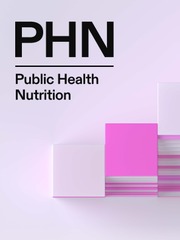No CrossRef data available.
The measurement of dietary species richness reveals that a higher consumption of dietary fibre, fish, fruits and vegetables, is associated with greater food biodiversity in UK diets
Published online by Cambridge University Press: 11 April 2025
Abstract
We determined whether Dietary Species Richness (DSR) i) can be robustly measured using four-day food intake data, ii) is dependent on sociodemographic characteristics, and iii) is associated with diet quality.
The National Diet and Nutrition Survey (NDNS) nutrient databank 2018–2019 was expanded to include FoodEx2 food classifications, ingredients, the number and identity of unique species, Nutrient Rich Food 8.3 (NRF8.3) Index scores, and greenhouse gas (GHG) emissions. Four-day food intake data and sociodemographic variables were used to calculate diet quality and DSR on the food and diet level.
The United Kingdom (UK).
Participants from NDNS 9 to 11 (2016-2019).
Composite dishes had the highest DSR (median 8 [Q1=4, Q3=12]), followed by seasoning, sauces, and condiments (median 7, [Q1=4, Q3 =10]) and, grains and grain-based products (median 5, [Q1=2, Q3=7]). Median DSR over four days was 49 [Q1=43, Q3=56; range 14 - 92], with the first two days achieving 80% of DSR measured over four days. DSR was significantly higher in those who were younger, those with a higher household income, or those with a lower level of deprivation (all p<0.001). Higher DSR was associated with a small but significant improvement in nutritional quality (p<0.001). Also, adherence to dietary guidelines such as fibre, fruits and vegetables, and fish was associated with significantly higher DSR (all p<0.001).
We successfully established DSR based on four-day food intake data. We also identified opportunities to improve DSR by increasing the consumption of fruits, vegetables, fibre, and fish.
- Type
- Research Paper
- Information
- Creative Commons
- This is an Open Access article, distributed under the terms of the Creative Commons Attribution licence (http://creativecommons.org/licenses/by/4.0/), which permits unrestricted re-use, distribution and reproduction, provided the original article is properly cited.
- Copyright
- © The Author(s), 2025. Published by Cambridge University Press on behalf of The Nutrition Society
Footnotes
Both authors contributed equally


